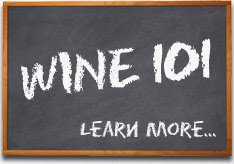Here are the main white varietals, what they contain and what they taste like.
Real Time Wine & WineStyle present: White Wine Varietals. The Beginners Guide.
Even though most people these days seem to drink Sauvignon Blanc like it's water, there are actually other varietals out there. Below is a list of some of the main white varietals in South Africa. Give them a try; many are really good value for money as they are not well known and therefore harder to sell. They are all totally unique and will really enhance your wine drinking experience.
Sauvignon Blanc
Pronounced: Sow-veen-non-blanc
The flavour can vary from very grassy to tropical, depending on where the grapes were grown. Cooler climate versions such as Buitenverwagting Sauvignon Blanc taste like cut grass, freshly cut green pepper, asparagus and granadilla. Warmer climate wines like Thelema Sauvignon Blanc taste like tropical juice, tinned pineapple and sometimes even tinned peas. The palate is light and fresh with a clean acidity and the wines are best enjoyed in hot weather with light, fresh food or on their own, without a meal. They are best enjoyed when young and are not commonly considered wines for ageing.
Chenin Blanc
Pronounced: She-nin-blanc
Chenin Blanc also comes in two very distinct styles. The first is light, fresh and easy drinking and the flavour is reminiscent of freshly cut guava with a hint of grass. The second style is wooded and is rich and round. It tastes like honey on toast with baked Granny Smith apples and is a wine that can age for several years. Light Chenin Blancs are best drunk young, with or without a meal. The wooded style is delicious with rich food like creamy seafood soup or even rich cold meats like Parma ham and salami.
Chardonnay
Pronounced: Shar-don-nay
Chardonnay can be unwooded or wooded but the unwooded style is not very popular since people looking for unwooded wines generally drink Sauvignon Blanc or Chenin. So let’s concentrate on the wooded style. It can vary from lightly wooded, which is fresh and breezy and can be enjoyed with or without food, to more heavily wooded wines that taste like buttered toast with hints of citrus peel and marzipan. After an uncool period, Chardonnay is back in fashion now that winemakers have greater control and make wines that are wooded yet fresh and palatable. The old-fashioned examples sometimes tasted as if you were chewing on a matchstick.
Riesling
Pronounced: Reece-ling
Although this possibly is one of South Africa’s least popular grapes, it is one of the world’s most versatile. The reason is simple: our Rieslings often aren't great. Furthermore, it is confused with another variety called Cape Riesling or Paarl Riesling that are best left alone. Riesling and Weisser Riesling refer to the same thing, a German grape variety that tastes like lime cordial with a hint of gunpowder or kerosene and is quite delicious.
Viognier
Pronounced: Vee-o-nee-ay
This fashionable grape variety has been made popular by the fact that it is very easy to recognise and has a kind of sweetness to it that many people enjoy. It smells of peaches, lychees, rose petals and orange blossom. Despite the deceptively sweet aroma, it usually is dry and the palate is rich, round and just as fragrant as the nose. It is best enjoyed with food as the complex aromas can make it difficult to drink more than a glass without food.
Sémillon
Pronounced: Sem-ee-on (Please note that both l's are silent.)
Sémillon is the unsung hero in many South African white blends. It can be made in one of two styles. Unwooded it is fresh and grassy and smells a little like Sauvignon Blanc but is richer and more velvety on the palate. It is often secretly blended into Sauvignon Blanc to make the wine taste a little more serious. Winemakers are allowed to do this with any wine without having to declare it, provided no more than 15% of another variety has been added to the varietal named on the label.
Wooded Sémillon is rich and heady and smells like candied oranges and lanolin. It is not that common to see a wooded Sémillon on the shelf as not many consumers know it, making it a hard sell. Most wooded Sémillons are used for blending with Sauvignon, either silently or to make a white blend (discussed next).
White Bordeaux blends
Pronounced: Bored-oh
A white Bordeaux blend is a blend of Sauvignon Blanc and Sémillon. The Sémillon component can be wooded or unwooded. Right now, white blends are seriously trendy and South Africa is producing some amazing ones. They age beautifully, up to 10 years, and have a delicious mineral quality that is not found in any single varietal. They are quite big, serious wines and are best enjoyed with a meal.
White Rhône blend
Pronounced: as it is written
While you may not have heard of a white Rhône blend, it can be any white wine that contains Viognier, Marsanne, Rousanne, Grenache Blanc and sometimes Chenin Blanc or Chardonnay. Such blends tend to be aromatic and rich and are best drunk with food.
<> <> <>
The Wine 101 series is a collaboration between Real Time Wine and WineStyle Magazine. Content originally produced by WineStyle. Subscribe to their great newsletter and wine deals here. And whatever wine you're drinking, it's better to share it with your friends using Real Time Wine, the wine app for everyone who enjoys wine, not just those who understand it!


No comments:
Post a Comment